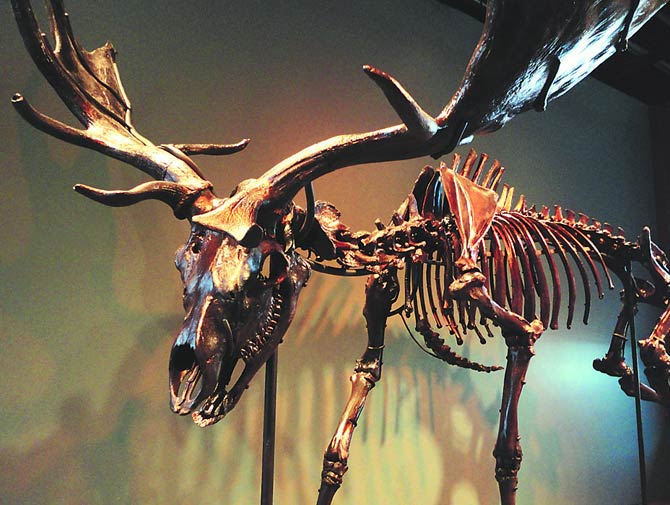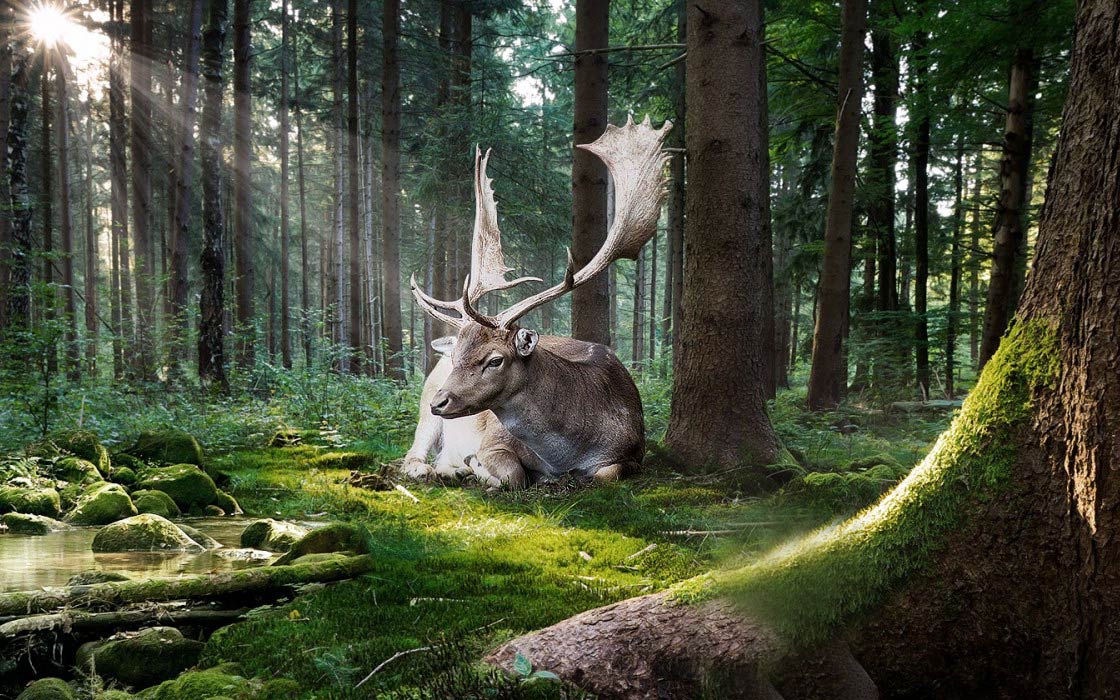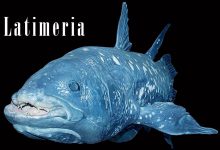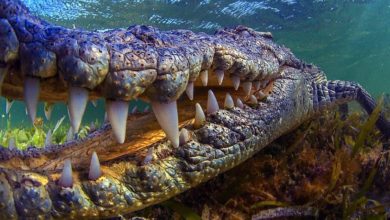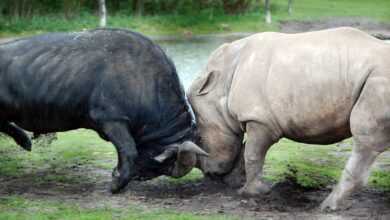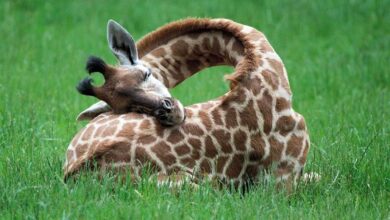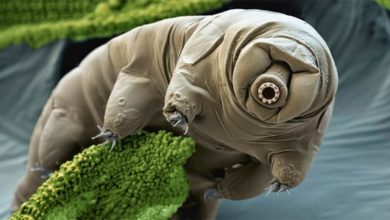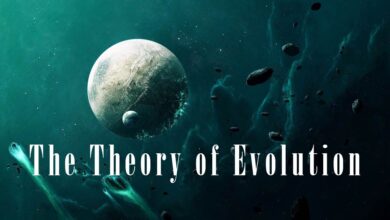Irish elk, Giant deer, Irish deer
One of the largest deer that ever lived, and also possessor of the largest antlers among the known members of this family. It is not without reason, therefore, that the giant deer received its name. It certainly emphasizes its most distinct features – the large size of the body and the antlers crowning its head. Could this “crown” be the curse of the giant deer? How could antlers contribute to the extinction of an entire species? We will try to answer these questions in the article.
Classification
- Kingdom: Animalia
- Phylum: Chordata
- Class: Mammalia
- Order: Artiodactyla
- Family: Cervidae
- Subfamily: Cervinae
- Genus: †Megaloceros
- Species: †Megaloceros giganteus
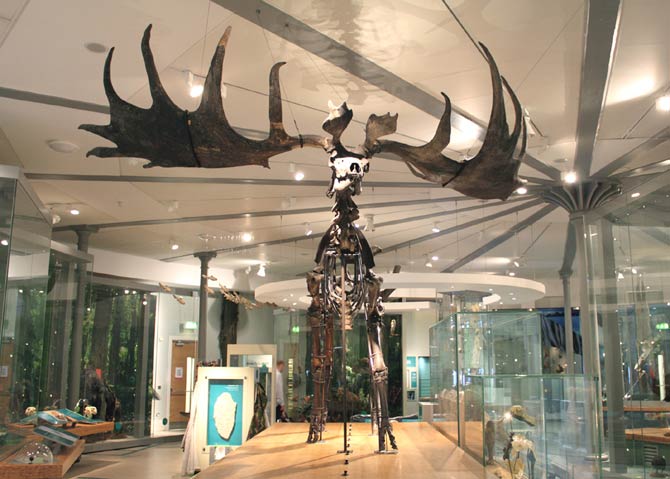
Dating and occurrence
Most of the discovered remains of the giant deer are dated to around 11,000 years ago, but the first representatives of this species appeared on our planet around 400,000 years ago, in the Pleistocene period. The youngest found remains of this mighty mammal are estimated at around 7,700 years.
Most of the giant deer bones were dug from Irish soil, but these animals were not closely related to this land. They lived all over Europe, as well as northern Asia and Africa.
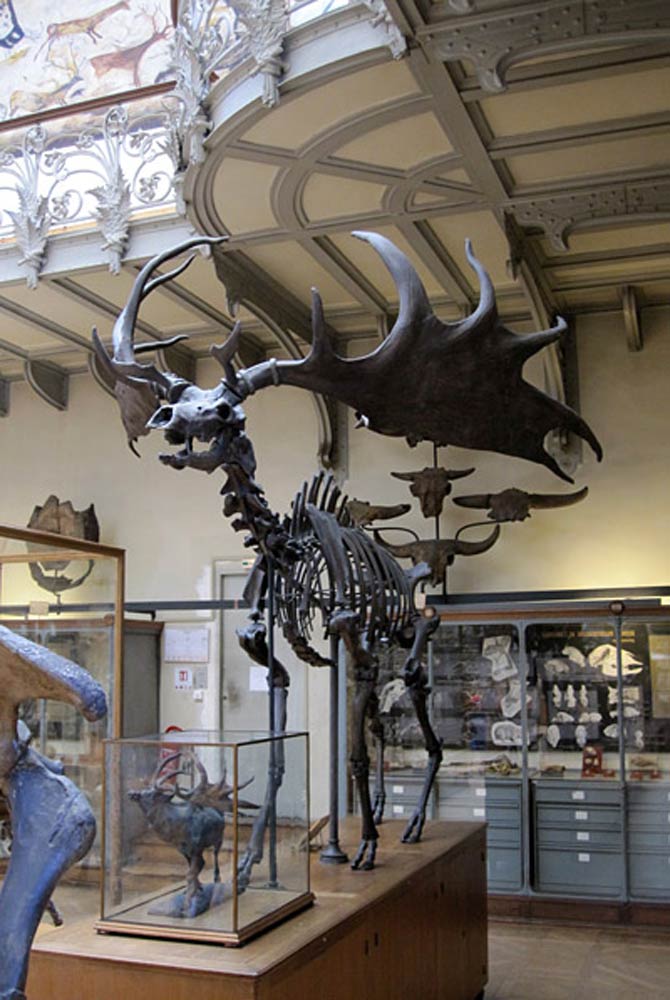
Characteristic
Appearance
This impressive size mammal was approx. 2 m high (6.5 ft) at the withers and could reach a weight of 540-600 kg (1,190 – 1,323 lb); the largest known specimens could weigh up to 700 kg (1,540 lb) and more. Its dimensions therefore resembled modern Alaskan moose (Alces alces gigas).
A characteristic feature of this creature was huge antlers, reaching a maximum span of 3.65 m (12 ft). Beautiful antlers, however, were not light – they could weigh up to 40 kg (88 lb).

Antler functions
We will not find such powerful antlers in any animal today. Certainly, it would make an amazing impression on the observers. The question arises, however, why do giant deer needed such large and heavy antlers? There are several theories on this subject.
One hypothesis is that the antlers became larger and larger under the influence of sexual selection – males used them in fighting for access to females. At one point, it became so uncomfortable (for example, the inability to tilt and twist the head) that the deer were unable to live a normal life, with the consequent extinction of the deer.
However, Stephen Jay Gould in 1974 proved that the size of the antler of the giant deer was proportional to the size of the body, but this does not exclude the fact that the size of the antlers had a significant impact on reproductive success (the larger the antlers, the greater the attraction for females, which would be associated with passing on your genes).
According to previous research results, the position of the antlers made fights between males impossible. Instead, it would help in presenting it to females and scaring rivals. Contrary to this hypothesis, in 1987 Kitchener proved that the antlers of giant deer served them not only to scare other males and attract female partners, but also to fight. It was also possible to establish that these deer shed their antlers cyclically – new ones appeared during the mating season.
Scientists found that under unfavorable environmental conditions, the body weight and antlers of the giant deer were smaller than in the average specimen. However, these differences do not seem to be extreme.
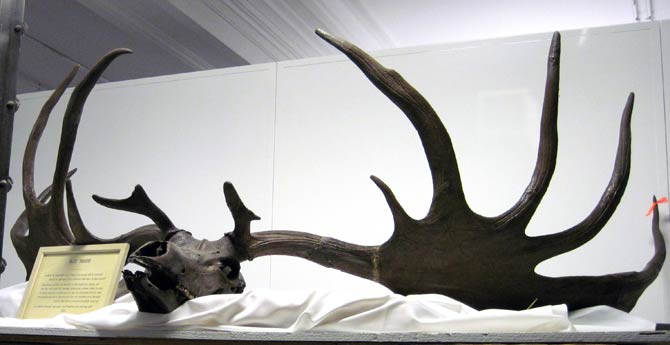
The causes of extinction
For a long time, giant antlers were considered the main cause of the extinction of the species (however, the question of the ratio of the size of the antlers to the overall body size was omitted in these theories).
Today it is suggested that hunting by the first humans was one of the reasons for the extinction of the giant deer. Nevertheless, the human influence on the disappearance of the giant deer from the Eurasian landscape is not entirely clear.
A large number of scientists believe that the ultimate cause of extinction of the species was climate change and, consequently, a change in plant cover. The plant foods consumed so far ceased to exist, and the new ones were not suitable for eating by these powerful mammals. Some studies suggest that it was not about the type of food, but rather the amount of it – over time, food for deer could have become scarce.
In 2000, Silvia Gonzalez, Andrew Kitchener, and Adrian Lister published an article stating that decreasing forest density in the Late Pleistocene reduced the number of important plant foods. This, in turn, led to a reduction in the size of the antlers (which was an important element of sexual selection) and the size of the whole body. This could lead to a slow extinction of the giant deer.
Therefore, the reduction of the antlers is only the effect, not the cause of the species decline. However, the latest giant deer remains discovered in Siberia (dated 7,700 years ago) showed no decrease in nutrients. They come from a region with a continental climate where the change of vegetation (yet?) did not take place then.
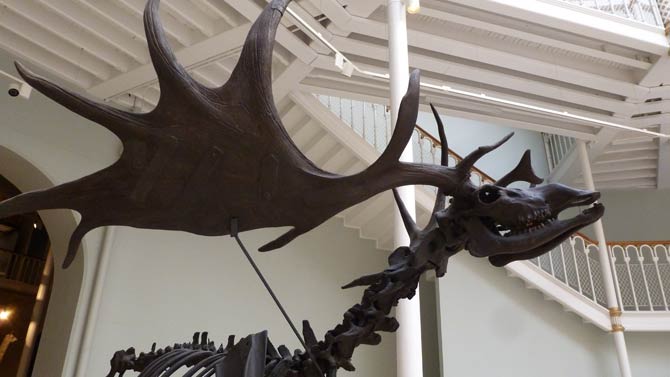
Detailed data / dimensions (size)
Irish elk, Giant deer, Irish deer (Megaloceros giganteus)
- Height at the withers: 2 m (6.5 ft)
- Weight: 540-600 kg (1,190 – 1,323 lb)
- the largest individuals could weigh 700 kg (1,540 lb) and more
- Antlers span: up to 3.65 m (12 ft)
- Weight of the antlers: up to 40 kg (88 lb)
- Dating: 400,000-7,700 years ago
- Period: Middle Pleistocene – Middle Holocene
- Distribution: Eurasia, North Africa
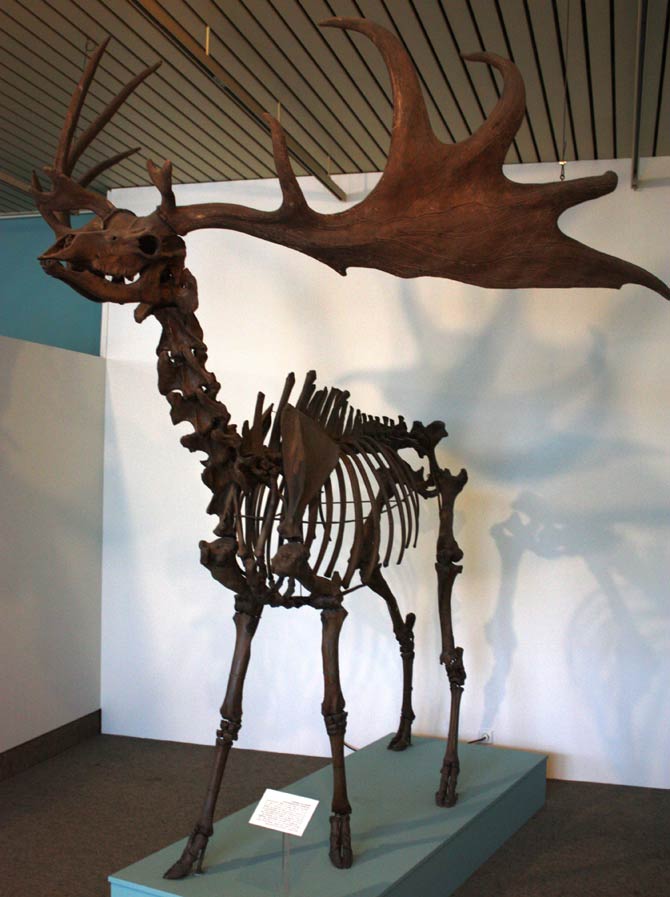
Irish elk, Giant deer, Irish deer – interesting facts
- The giant deer had the largest antlers among all known representatives of the deer family.
- The Irish elk is featured on the coat of arms of Northern Ireland.
- A rich collection of giant deer skeletons can be admired at the Natural History Museum in Dublin.
- The giant deer was selected by the Long Now Foundation as a potential candidate for rebirth in modern ecosystems.
- The evolutionary mechanism by which changes in organisms occur not by natural selection but by an internal or external “driving force” within a group (lineage) is called orthogenesis. In the past, the giant deer was considered an ideal example of orthogenesis. It was believed that the antlers, which at some point reached gigantic dimensions, were burdened with internal, linear development within this group of animals. According to this theory, the antlers of giant deer were so large that the animals could not lift them or they became entangled in the branches of trees, which significantly contributed to their extinction.
